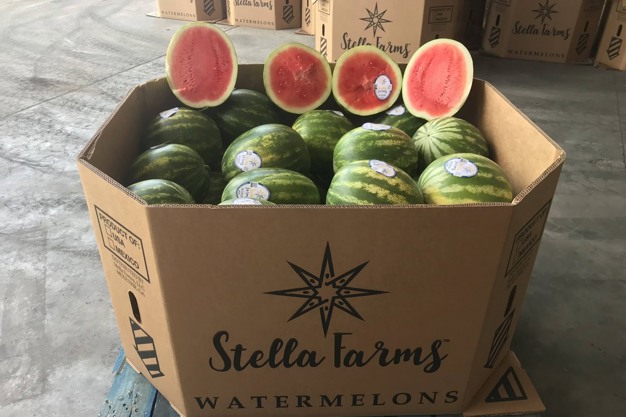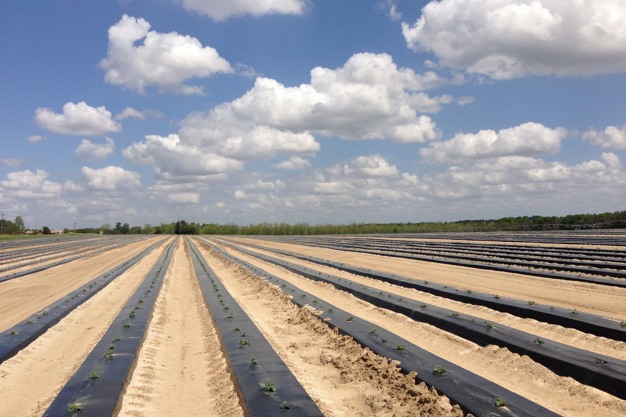The watermelon supply is tighter than normal for this time of year. "There has been very limited availability for the last couple of weeks, and conditions will likely remain tight for at least the next couple of weeks, perhaps longer," says Michael Martori of Stella Farms.
He estimates that right now, there could be between 15-25 percent less supply than last year, with lower production levels in both Southern Mexico and Central America. In Mexico, production is coming from the states of Nayarit, Jalisco, Colima, Campeche and the Yucatan while Central American production is largely from Guatemala. However, there is less volume arriving from the Dominican Republic and Costa Rica as well.
"Southern Mexican production has been impacted by severe weather that hit the growing regions in the Fall of 2023. The yields from Southern Mexico have been below average since the start of harvest, and those lower yields are the most significant factor in the tighter market conditions we've seen this winter," says Martori. "Overall, it's been a cooler and wetter winter than normal in Mexico and Central America, which has hurt production levels."
 Central American imports may increase slightly in March, but this will likely not improve overall supply levels due to the decrease in Mexican production.
Central American imports may increase slightly in March, but this will likely not improve overall supply levels due to the decrease in Mexican production.
Winter and fresh-cut demand
As for watermelon demand, it's still strong enough to keep pricing elevated, but it's probably slightly below average as higher prices curtail movement to some degree. "Much of the watermelon consumption in the winter months is in the fresh-cut category. Fresh-cut watermelon tends to be a more consistent, week in and week out, purchase by consumers, which leads to less elastic demand in the winter and supports the higher pricing we're seeing in the face of limited supply," says Martori. Consumption should also stay relatively steady between now and the end of March, at which point it will increase as warmer spring weather starts to drive more consumer interest in watermelon. That's also when retailers begin transitioning to large displays, featuring larger floor bin displays and transitioning out of cartons.
On pricing, it has ranged from $0.40 - $0.44/lb. for the last several weeks, which is about 25 percent higher than last year. "Market conditions will likely remain tight for the next several weeks. Pricing should remain above average and availability will be limited," he says.
Looking ahead, production will continue from Southern Mexico for several more weeks or even up to one month after which it transitions to the Northern Mexican growing regions of Sonora and Tamaulipas, though those regions won't start ramping up until late March or April. "That is due to delays caused by cool and wet weather during the planting and growing periods," says Martori.
 An early look at a South Florida watermelon field.
An early look at a South Florida watermelon field.
Central American outlook
Central American imports may increase slightly in March, but this will likely not improve overall supply levels due to the decrease in Mexican production. Central America will continue shipping through April.
The transition from Southern Mexico to Northern Mexico and Southern Florida is the biggest short-term challenge for the watermelon category. With Southern Mexico producing below-average yields, that means less production in March and most likely an early end to production in that region. "Both Northern Mexico and Southern Florida are expected to start one to two weeks later than normal due to planting delays and slower crop growth, both the result of cooler and wetter weather than normal," says Martori. "We may see a period of very light production, or possibly even a gap, during the transition from Southern Mexico to Northern Mexico and South Florida sometime in March. It's possible that availability will get worse before it gets better."
It's anticipated that May will be when market conditions return to normal given by then, Northern Mexico and Southern Florida reach peak production levels.
 For more information:
For more information:
Mike Martori
Stella Farms
Tel: +1 (480) 588-7012
mike@stellafarms.com
www.stellafarms.com
